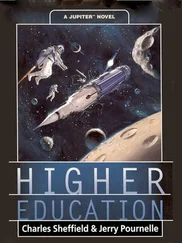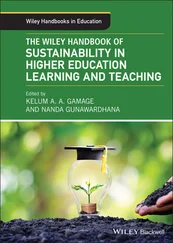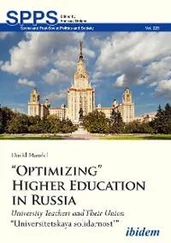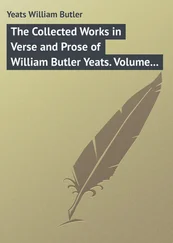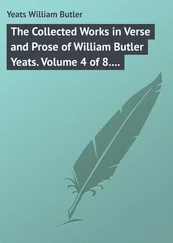William A. Kaplin - The Law of Higher Education
Здесь есть возможность читать онлайн «William A. Kaplin - The Law of Higher Education» — ознакомительный отрывок электронной книги совершенно бесплатно, а после прочтения отрывка купить полную версию. В некоторых случаях можно слушать аудио, скачать через торрент в формате fb2 и присутствует краткое содержание. Жанр: unrecognised, на английском языке. Описание произведения, (предисловие) а так же отзывы посетителей доступны на портале библиотеки ЛибКат.
- Название:The Law of Higher Education
- Автор:
- Жанр:
- Год:неизвестен
- ISBN:нет данных
- Рейтинг книги:3 / 5. Голосов: 1
-
Избранное:Добавить в избранное
- Отзывы:
-
Ваша оценка:
- 60
- 1
- 2
- 3
- 4
- 5
The Law of Higher Education: краткое содержание, описание и аннотация
Предлагаем к чтению аннотацию, описание, краткое содержание или предисловие (зависит от того, что написал сам автор книги «The Law of Higher Education»). Если вы не нашли необходимую информацию о книге — напишите в комментариях, мы постараемся отыскать её.
provides an up-to-date reference and guide for coursework in higher education law and programs preparing law students and higher education administrators for leadership roles.
This student edition discusses the most significant areas of the law for college and university attorneys and administrators. Each chapter is introduced by a discussion of key terms and topics the students will encounter, and the book includes materials from the full sixth edition that are most relevant to student interests and classroom instruction. It also contains a “crosswalk” that keys sections of the Student Edition to counterpart sections of the two-volume treatise.
Complements the full version Includes a glossary of legal terms and an appendix on how to read legal material for students without legal training Discusses key terms in each chapter Concentrates on key topics students will need to know This is fundamental reading for law students preparing for careers in higher education law and for graduate students in higher education administration programs.
The Law of Higher Education — читать онлайн ознакомительный отрывок
Ниже представлен текст книги, разбитый по страницам. Система сохранения места последней прочитанной страницы, позволяет с удобством читать онлайн бесплатно книгу «The Law of Higher Education», без необходимости каждый раз заново искать на чём Вы остановились. Поставьте закладку, и сможете в любой момент перейти на страницу, на которой закончили чтение.
Интервал:
Закладка:
Subjects: LCSH: Universities and colleges—Law and legislation—United States. | School management and organization—Law and legislation—United States. | Universities and colleges—United States—Administration.
Classification: LCC KF4225 .K375 2020 (print) | LCC KF4225 (ebook) | DDC 344.73/074—dc23
LC record available at https://lccn.loc.gov/2019041168
LC ebook record available at https://lccn.loc.gov/2019041169
Cover design by Michael Cook
Notice to Instructors
The authors have prepared a compilation of teaching materials for classroom use (see below) that is available in electronic format free of charge for instructors who adopt this Student Version as a required text. In addition, we have a website supporting the Student Edition (as well as the full 6th Edition of The Law of Higher Education ) that is accessible to both instructors and students; it includes new developments, clarifications, and errata that update and supplement the 6th Edition and the Student Version . We have also prepared an Instructor’s Manual that provides suggestions on using the Student Version as a course text and on organizing and teaching higher education law courses. It is available, only to instructors, on the website. This website is hosted by the National Association of College and University Attorneys (NACUA) and is available at https://www.nacua.org/resource-library/resources-by-type/the-law-of-higher-education-6th-edition. The teaching materials, Cases, Problems, and Materials for Use with the Law of Higher Education, Fifth Edition, Student Version , is for instructors and students in courses on higher education law or administration, as well as for leaders and participants in workshops that address higher education legal issues. These teaching materials include court opinions carefully edited by the authors and keyed to the Student Version , notes and questions about the cases, short problems designed to elicit discussion on particular issues, a series of “large-scale” problems suitable for role playing, and guidelines for analyzing and answering all the problems. Cases, Problems, and Materials (Student Version) is published by NACUA (which also hosts the website for the Student Version and the full 6th Edition ) and is available both in electronic format that can be downloaded from NACUA’s website ( https://www.nacua.org/resource-library/resources-by-type/the-law-of-higher-education-6th-edition) and in hard copies that may be purchased at cost from NACUA. Any instructor who has adopted the Student Version as a required course text may download a copy of Cases, Problems, and Materials , or selected portions of it, free of charge and reproduce the materials for distribution to the students in the course. No other reproduction, distribution, or transmission is permitted. For hard copies, direct inquiries and orders to:
Assistant Director of Legal Resources
National Association of College and University Attorneys
Suite 620, One Dupont Circle, NW
Washington, D.C. 20036
(202) 833–8390; Fax (202) 296–8379
Further instructions for downloading or purchasing Cases, Problems, and Materials are on the NACUA Web site ( https://www.nacua.org/resource-library/resources-by-type/the-law-of-higher-education-6th-edition).
Notice of Website and Periodic Supplements for the Student Version
The authors, in cooperation with the publisher, have made arrangements for two types of periodic updates for the Student Version (and the full 6th Edition ) of The Law of Higher Education . First, the National Association of College and University Attorneys (NACUA) has generously agreed to host a website for the Student Version and the full 6th Edition to provide periodic postings of new developments and clarifications that update and supplement both books. This website is available to all readers and may be accessed through the NACUA website ( https://www.nacua.org/resource-library/resources-by-type/the-law-of-higher-education-6th-edition). These updating services are intended as a response to the law's dynamism—to the rapid and frequent change that occurs as courts, legislatures, government agencies, and private organizations develop new requirements, revise or eliminate old requirements, and devise new ways to regulate and influence institutions of higher education.
Crosswalk for the Student Version and The Law of Higher Education, Sixth Edition
The crosswalk below directs interested readers from particular sections of the Student Version to the parallel section or sections in The Law of Higher Education, Sixth Edition. Since LHE 6th is a larger work ( 2 volumes), it contains more citations of resources and more case examples than the Student Version. This additional material in LHE 6th may be useful to instructors preparing classes and to students engaging in research or independent study. In addition, LHE 6th includes various sections covering topics—usually specialized topics of primary interest to practitioners—that are not treated in the Student Version . Although these additional sections in LHE 6th are not shown on this crosswalk, interested readers may view the entire Table of Contents of LHE 6th by going to the NACUA website that supports LHE 6th and the Student Version (see “Notice of webSite and Periodic Supplements,” previously in the front matter) .
| Student Version | LHE 6th Edition |
| Section Numbers | Section Numbers |
| General Introduction: The Study of Higher Education Law | |
| A. The Universe of Education Law | |
| B. The Governance of Higher Education | |
| C. Sources of Higher Education Law | |
| D. The Legal Relationships within Institutions of Higher Education | |
| E. The Law/Policy Distinction | |
| F. The U.S. Legal System as It Relates to Higher Education Law | |
| PART ONE PERSPECTIVES AND FOUNDATIONS | |
| 1 Overview of Higher Education Law | |
| 1.1 How Far the Law Reaches and How Loudly It Speaks | 1.1 |
| 1.2 Evolution of Higher Education Law | 1.2 |
| 1.3 The Governance of Higher Education | 1.3 |
| 1.3.1 Basic concepts and distinctions | 1.3.1 |
| 1.3.2 Internal governance | 1.3.2 |
| 1.3.3 External governance | 1.3.3 |
| 1.4 Sources of Higher Education Law | 1.4 |
| 1.4.1 Overview | 1.4.1 |
| 1.4.2 External sources of law | 1.4.2 |
| 1.4.2.1 Federal and state constitutions | 1.4.2.1 |
| 1.4.2.2 Statutes | 1.4.2.2 |
| 1.4.2.3 Administrative rules and regulations | 1.4.2.3 |
| 1.4.2.4 State common law | 1.4.2.4 |
| 1.4.2.5 Foreign and international law | 1.4.2.5 |
| 1.4.3 Internal sources of law | 1.4.3 |
| 1.4.3.1 Institutional rules and regulations | 1.4.3.1 |
| 1.4.3.2 Institutional contracts | 1.4.3.2 |
| 1.4.3.3 Academic custom and usage | 1.4.3.3 |
| 1.4.4 The role of case law | 1.4.4 |
| 1.4.5 Researching case law | 1.4.4 |
| 1.5 The Public-Private Dichotomy | 1.5 |
| 1.5.1 Overview | 1.5.1 |
| 1.5.2 The state action doctrine | 1.5.2 |
| 1.5.2.1 When private postsecondary institutions may be engaged in state action | 1.5.2.1 |
| 1.5.2.2 When students, employees, and others may be engaged in state action | 1.5.2.2 |
| 1.5.3 Other bases for legal rights in private institutions | 1.5.3 |
| 1.6 Religion and the Public-Private Dichotomy | 1.6 |
| 1.6.1 Overview | 1.6.1 |
| 1.6.2 Religious autonomy rights of religious institutions and their personnel | 1.6.2 |
| 1.6.3 Government support for religious institutions and their students and faculty members | 1.6.3 |
| 1.6.4 Religious autonomy rights of individuals in public postsecondary institutions | 1.6.4 |
| 1.7 The Relationship Between Law and Policy | 1.7 |
| 2 Legal Planning and Dispute Resolution | |
| 2.1 Legal Liability | 2.1 |
| 2.1.1 Overview | 2.1.1 |
| 2.1.2 Types of liability | 2.1.2 |
| 2.1.3 Agency law | 2.1.3 |
| 2.1.4 Enforcement mechanisms | 2.1.4 |
| 2.1.5 Remedies for legal violations | 2.1.5 |
| 2.1.6 Avoiding legal liability | 2.1.6 |
| 2.1.7 Treatment law and preventive law | 2.4.2 |
| 2.2 Litigation in the Courts | 2.2 |
| 2.2.1 Overview | 2.2.1 |
| 2.2.2 Judicial (academic) deference | 2.2.5 |
| 2.2.3 Managing litigation and the threat of litigation | 2.2.6 |
| 2.3 Alternative Dispute Resolution | 2.3 |
| 2.3.1 Overview | 2.3.1 |
| 2.3.2 Types of ADR | 2.3.2 |
| 2.3.3 Applications to colleges and universities | 2.3.3 |
| 2.4 Institutional Management of Liability Risk | 2.5 |
| 2.4.1 Overview and suggestions | 2.5.1 |
| 2.4.2 Risk management strategies | 2.5.2 |
| 2.4.3 Enterprise risk management | 2.5.5 |
| PART TWO THE COLLEGE AND ITS GOVERNING BOARD AND STAFF | |
| 3 The College’s Authority and Liability | |
| 3.1 The Question of Authority | 3.1 |
| 3.1.1 Overview | 3.2.1.1 |
| 3.1.2 Trustee authority | |
| 3.2 Institutional Tort Liability | 3.3 |
| 3.2.1 Overview | 3.3.1 |
| 3.2.2 Negligence | 3.3.2 |
| 3.2.2.1 Overview | 3.3.2.1 |
| 3.2.2.2 Premises liability | 3.3.2.2 |
| 3.2.2.3 Liability for injuries related to on-campus instruction | 3.3.2.3 |
| 3.2.2.4 Liability for injuries in off-campus courses | 3.3.2.4 |
| 3.2.2.5 Liability for cocurricular and social activities | 3.3.2.5 |
| 3.2.2.6 Student suicide | 3 3.2.6 |
| 3.2.2.7 Liability for injuries related to outreach programs | 3 3.2.7 |
| 3.2.3 Educational malpractice and related claims | 3.3.3 |
| 3.2.4 Defamation | 3.3.4 |
| 3.3 Institutional Contract Liability | 3.4 |
| 3.4 Institutional Liability for Violating Federal Constitutional Rights (Section 1983 Liability) | 3.5 |
| 3.4.1 Overview | 3.5.1 |
| 3.4.2 Eleventh Amendment immunity | 3.5.2 |
| 4 The College and Its Employees | |
| 4.1 Overview of Employment Relationships | 4.1 |
| 4.2 Employment Contracts | 4.3 |
| 4.2.1 Defining the contract | 4.3.1 |
| 4.2.2 The at-will doctrine | 4.3.2 |
| 4.3 Collective Bargaining | 4.5 |
| 4.3.1 Overview | 4.5.1 |
| 4.3.2 The public-private dichotomy in collective bargaining | 4.5.2 |
| 4.3.3 Collective bargaining and antidiscrimination laws | 4.5.5 |
| 4.4 Personal Liability of Employees | 4.7 |
| 4.4.1 Overview | 4.7.1 |
| 4.4.2 Tort liability | 4.7.2 |
| 4.4.2.1 Overview | 4.7.2.1 |
| 4.4.2.2 Negligence | 4.7.2.2 |
| 4.4.2.3 Defamation | 4.7.2.3 |
| 4.4.3 Contract liability | 4.7.3 |
| 4.4.4 Constitutional liability (personal liability under Section 1983) | 4.7.4 |
| 4.4.4.1 Qualified immunity | 4.7.4.1 |
| 4.4.4.2 Issues on the merits: State-created dangers | 4.7.4.2 |
| 4.5 Employment Discrimination | 4.5 |
| 4.5.1 Overview: The interplay of statutes, regulations, and constitutional protections | 5.1 |
| 4.5.2 Sources of law | 5.2 |
| 4.5.2.1 Title VII | 5.2.1 |
| 4.5.2.2 Equal Pay Act | 5.2.2 |
| 4.5.2.3 Title IX | 5.2.3 |
| 4.5.2.4 Section 1981 | 5.2.4 |
| 4.5.2.5 Americans with Disabilities Act and Rehabilitation Act of 1973 | 5.2.5 |
| 4.5.2.6 Age Discrimination in Employment Act | 5.2.6 |
| 4.5.2.7 Constitutional prohibitions against employment discrimination | 5.2.8 |
| 4.5.2.8 Executive Orders 11246 and 11375 | 5.2.9 |
| 4.5.2.9 Laws prohibiting sexual orientation discrimination | 5.2.10 |
| 4.5.2.10 Laws prohibiting transgender discrimination | 5.2.11 |
| 4.6 Affirmative Action | 5.4 |
| 4.6.1 Overview | 5.4.1 |
| 4.6.2 Affirmative action under Title VII | 5.4.2 |
| 4.6.3 Affirmative action under the equal protection clause | 5.4.3 |
| 4.6.4 State regulation of affirmative action | 5.4.4 |
| 4.6.5 Conclusions | 5.4.5 |
| 4.7 Application of Nondiscrimination Laws to Religious Institutions | 5.5 |
| PART THREE THE COLLEGE AND ITS FACULTY | |
| 5 Special Issues in Faculty Employment | |
| 5.1 Overview | 6.1 |
| 5.2 Faculty Contracts | 6.2 |
| 5.2.1 Overview | 6.2.1 |
| 5.2.2 Academic custom and usage | 6.2.3 |
| 5.2.3 Part-time faculty | 6.2.4 |
| 5.2.4 Contracts in religious institutions | 6.2.5 |
| 5.3 Faculty Collective Bargaining | 6.3.1 |
| 5.4 Application of Nondiscrimination Laws to Faculty Employment Decisions | 6.4 |
| 5.4.1 Overview | 6.4.1 |
| 5.4.2 Judicial deference and remedies for tenure denial | 6.4.3 |
| 5.5 Affirmative Action in Faculty Employment Decisions | 6.5 |
| 5.6 Standards and Criteria for Faculty Personnel Decisions | 6.6 |
| 5.6.1 General principles | 6.6.1 |
| 5.6.2 Terminations of tenure for cause | 6.6.2 |
| 5.6.3 Denial of tenure | 6.6.3 |
| 5.7 Procedures for Faculty Employment Decisions | 6.7 |
| 5.7.1 General principles | 6.7.1 |
| 5.7.2 The public faculty member’s right to constitutional due process | 6.7.2 |
| 5.7.2.1 Overview | 6.7.2.1 |
| 5.7.2.2 Nonrenewal of contracts | 6.7.2.2 |
| 5.7.2.3 Denial of tenure | 6.7.2.3 |
| 5.7.2.4 Termination of tenure | 6.7.2.4 |
| 5.7.3 The private faculty member’s procedural rights | 6.7.3 |
| 6 Faculty Academic Freedom and Freedom of Expression | |
| 6.1 General Concepts and Principles | 7.1 |
| 6.1.1 Faculty freedom of expression in general | 7.1.1 |
| 6.1.2 Other constitutional rights supporting faculty freedom of expression | 7.1.2 |
| 6.1.3 Academic freedom: Basic concepts and distinctions | 7.1.3 |
| 6.1.4 Professional versus legal concepts of academic freedom | 7.1.4 |
| 6.1.5 The foundational constitutional law cases | 7.1.5 |
| 6.1.6 External versus internal restraints on academic freedom | 7.1.6 |
| 6.1.7 “Institutional” academic freedom | 7.1.7 |
| 6.1.8 “International” academic freedom | 7.1.8 |
| 6.2 Academic Freedom in Teaching | 7.2 |
| 6.2.1 In general | 7.2.1 |
| 6.2.2 The classroom | 7.2.2 |
| 6.2.3 Grading | 7.2.3 |
| 6.2.4 Private institutions | 7.2.5 |
| 6.3 Academic Freedom in Research and Publication | 7.3 |
| 6.4 Academic Freedom in Religious Colleges and Universities | 7.8 |
| PART FOUR THE COLLEGE AND ITS STUDENTS | |
| 7 The Student-Institution Relationship | |
| 7.1 The Legal Status of Students | 8.1 |
| 7.1.1 Overview | 8.1.1 |
| 7.1.2 The age of majority | 8.1.2 |
| 7.1.3 The contractual rights of students | 8.1.3 |
| 7.1.4 Student academic freedom | 8.1.4 |
| 7.1.5 Students’ legal relationships with other students | 8.1.5 |
| 7.2 Admissions | 8.2 |
| 7.2.1 Basic legal requirements | 8.2.1 |
| 7.2.2 Arbitrariness | 8.2.2 |
| 7.2.3 The contract theory | 8.2.3 |
| 7.2.4 The principle of nondiscrimination | 8.2.4 |
| 7.2.4.1 Race | 8.2.4.1 |
| 7.2.4.2 Sex | 8.2.4.2 |
| 7.2.4.3 Disability | 8.2.4.3 |
| 7.2.4.4 Age | 8.2.4.4 |
| 7.2.4.5 Immigration status | 8.2.4.6 |
| 7.2.5 Affirmative action programs | 8.2.5 |
| 7.2.6 Readmission | 8.2.6 |
| 7.3 Financial Aid | 8.3 |
| 7.3.1 General principles | 8.3.1 |
| 7.3.2 Federal programs | 8.3.2 |
| 7.3.3 Nondiscrimination | 8.3.3 |
| 7.3.4 Affirmative action in financial aid programs | 8.3.4 |
| 7.3.5 Discrimination against noncitizens | 8.3.6 |
| 7.3.5.1 Documented (immigrant and nonimmigrant) students | 8.3.6.1 |
| 7.3.5.2 Undocumented students | 8.3.6.2 |
| 7.4 Student Housing | 8.4 |
| 7.4.1 Overview | 8.4.1 |
| 7.4.2 Discrimination claims | 8.4.2 |
| 7.4.3 Searches and seizures | 8.4.3 |
| 7.5 Campus Computer Networks | 8.5 |
| 7.5.1 Freedom of speech | 8.5.1 |
| 7.5.2 Right to privacy | 8.5.2 |
| 7.5.3 Liability issues | 8.5.3 |
| 7.6 Campus Security | 8.6 |
| 7.6.1 Security officers | 8.6.1 |
| 7.6.2 Protecting students against violent crime | 8.6.2 |
| 7.6.3 Federal statutes and campus security | 8.6.3 |
| 7.7 Other Support Services | 8.7 |
| 7.7.1 Overview | 8.7.1 |
| 7.7.2 Services for students with disabilities | 8.7.3 |
| 7.7.3 Services for international students | 8.7.4 |
| 7.8 Student Records | 8.8 |
| 7.8.1 Family Educational Rights and Privacy Act (FERPA) | 8.8.1 |
| 7.8.2 State law | 8.8.2 |
| 8 Student Academic Issues | |
| 8.1 Overview | 9.1 |
| 8.2 Grading and Academic Standards | 9.2 |
| 8.3 Online Programs | 9.3 |
| 8.3.1 Overview | 9.3.1 |
| 8.3.2 Student legal claims about online programs | 9.3.3 |
| 8.4 Academic Accommodations for Students with Disabilities | 9.4 |
| 8.4.1 Overview | 9.4.1 |
| 8.4.2 Requests for programmatic or other accommodations | 9.4.2 |
| 8.4.2.1 Domestic programs | 9.4.2.1 |
| 8.4.2.2 Study abroad programs | 9.4.2.2 |
| 8.4.2.3 Online programs | 9.4.2.3 |
| 8.5 Sexual Harassment of Students by Faculty Members | 9.5 |
| 8.6 Academic Dismissals and Other Academic Sanctions | 9.6 |
| 8.6.1 Overview | 9.6.1 |
| 8.6.2 Contract issues and fiduciary duty issues | 9.6.2 |
| 8.6.3 Constitutional issues | 9.6.3 |
| 8.6.4 Discrimination issues | 9.6.4 |
| 8.6.5 Procedures for academic sanctions | 9.6.5 |
| 8.6.5.1 Public institutions | 9.6.5.1 |
| 8.6.5.2 Private institutions | 9.6.5.2 |
| 9 Student Disciplinary Issues | |
| 9.1 Disciplinary and Grievance Systems | 10.1 |
| 9.1.1 Overview | 10.1.1 |
| 9.1.2 Establishment of systems | 10.1.2 |
| 9.1.3 Codes of student conduct | 10.1.3 |
| 9.1.4 Judicial systems | 10.1.4 |
| 9.2 Disciplinary Rules and Regulations | 10.2 |
| 9.2.1 Overview | 10.2.1 |
| 9.2.2 Public institutions | 10.2.2 |
| 9.2.3 Private institutions | 10.2.3 |
| 9.2.4 Disciplining students with mental disorders | 10.2.4 |
| 9.3 Procedures for Suspension, Dismissal, and Other Sanctions | 10.3 |
| 9.3.1 Overview | 10.3.1 |
| 9.3.2 Public institutions: Disciplinary sanctions | 10.3.2 |
| 9.3.2.1 Overview | 10.3.2.1 |
| 9.3.2.2 Notice | 10.3.2.2 |
| 9.3.2.3 Hearing | 10.3.2.3 |
| 9.3.3 Private institutions | 10.3.3 |
| 9.4 Student Protests and Freedom of Speech | 10.4 |
| 9.4.1 Student free speech in general | 10.4.1 |
| 9.4.2 The “public forum” concept | 10.4.2 |
| 9.4.3 Regulation of student protest | 10.4.3 |
| 9.4.4 Prior approval of protest activities | 10.4.4 |
| 9.4.5 Posters and leaflets | 10.4.6 |
| 9.4.6 Protests in the classroom | 10.4.7 |
| 9.5 Speech Codes and the Problem of Hate Speech | 10.5 |
| 9.5.1 Hate speech and the campus | 10.5.1 |
| 9.5.2 The case law on hate speech and speech codes | 10.5.2 |
| 9.5.3 Guidelines for dealing with hate speech on campus | 10.5.3 |
| 10 Rights and Responsibilities of Student Organizations and Their Members | |
| 10.1 Student Organizations | 11.1 |
| 10.1.1 The right to organize | 11.1.1 |
| 10.1.2 The right not to join, or associate, or subsidize | 11.1.2 |
| 10.1.3 Mandatory student activities fees | 11.1.3 |
| 10.1.4 Principle of nondiscrimination | 11.1.4 |
| 10.1.5 Religious activities | 11.1.5 |
| 10.2 Fraternities and Sororities | 11.2 |
| 10.2.1 Overview | 11.2.1 |
| 10.2.2 Institutional recognition and regulation of fraternal organizations | 11.2.2 |
| 10.2.3 Institutional liability for the acts of fraternal organizations | 11.2.3 |
| 10.3 The Student Press | 11.3 |
| 10.3.1 General principles | 11.3.1 |
| 10.3.2 Mandatory student fee allocations to student publications | 11.3.2 |
| 10.3.3 Permissible scope of institutional regulation | 11.3.3 |
| 10.3.4 Advertising in student publications | 11.3.4 |
| 10.3.5 Obscenity | 11.3.5 |
| 10.3.6 Libel | 11.3.6 |
| 10.3.7 Obscenity and libel in private institutions | 11.3.7 |
| 10.4 Athletic Teams and Clubs | 11.4 |
| 10.4.1 General principles | 11.4.1 |
| 10.4.2 Athletes’ due process rights | 11.4.2 |
| 10.4.3 Athletes’ freedom of speech | 11.4.3 |
| 10.4.4 Pertinent statutory law | 11.4.4 |
| 10.4.5 Athletic scholarships | 11.4.5 |
| 10.4.6 Sex discrimination | 11.4.6 |
| 10.4.7 Discrimination on the basis of disability | 11.4.7 |
| 10.4.8 Drug testing | 11.4.8 |
| 10.4.9 Tort liability for athletic injuries | 11.4.9 |
| PART FIVE THE COLLEGE AND THE OUTSIDE WORLD | |
| 11 The College and Government | |
| 11.1 Local Government Regulation | |
| 11.1.1 Overview of local government regulation | 12.1 |
| 11.1.2 Trespass statutes and ordinances, and related campus regulations | 12.6.3 |
| 11.1.3 Relations with local police | 12.5 |
| 11.2 State Government Regulation | |
| 11.2.1 Overview | 13.1 |
| 11.2.2 State provision of public postsecondary education | 13.2.1 |
| 11.2.3 State chartering and licensure of private postsecondary institutions | 13.3.1 |
| 11.2.4 Other state regulatory laws affecting postsecondary education programs | 13.5 |
| 11.2.4.1 Laws on gun possession | 13.5.6 |
| 11.3 Federal Government Regulation | |
| 11.3.1 Overview of federal constitutional powers over education | 14.1.1 |
| 11.3.2 Federal regulation of postsecondary education | 14.2 |
| 11.3.2.1 Overview | 14.2.1 |
| 11.3.2.2 Regulation of research | 14.2.3 |
| 11.3.2.3 Regulation of intellectual property | 14.2.5 |
| 11.4 Federal Aid-to-Education Programs | 14.4 |
| 11.4.1 Functions and history | 14.4.1 |
| 11.4.2 Legal structure of federal aid programs | 14.4.3 |
| 11.5 Civil Rights Compliance | 14.5 |
| 11.5.1 General considerations | 14.5.1 |
| 11.5.2 Title VI | 14.5.2 |
| 11.5.3 Title IX | 14.5.3 |
| 11.5.3.1 Overview | 14.5.3.1 |
| 11.5.3.2 Title IX and peer sexual harassment | 14.5.3.2 |
| 11.5.3.3 Claims by accusing students | 14.5.3.3 |
| 11.5.3.4 Claims by accused students | 14.5.3.4 |
| 11.5.4 Section 504 of the Rehabilitation Act | 14.5.4 |
| 11.5.5 Coverage of unintentional discrimination | 14.5.7.2 |
| 12 The College and External Private Entities | |
| 12.1 The Education Associations | |
| 12.1.1 Overview of the education associations | 15.1 |
| 12.1.2 Accrediting agencies | 15.3.1 |
| 12.1.3 Athletic associations and conferences | 15.4.1 |
| 12.2 Business Partners. | |
| 12.2.1 Research collaboration | 16.4.1 |
| 12.2.2 The research agreement | 16.4.2 |
| APPENDICES | |
| A. Constitution of the United States of America: Provisions of Particular Interest to Postsecondary Education | |
| B. The American Court System | |
| C. Reading and Analyzing Court Opinions | |
| D. Glossary of Legal Terms | |
| Bibliography | |
| Statute Index | |
| Case Index | |
| Subject Index |
Much as it takes a village to raise a child (a saying of obscure origin), it takes an “academical village” (Thomas Jefferson's phrase) to raise a book—at least a book such as this that arises from, and whose purpose is to serve, a national (and now international) academic community. This Student Version of the sixth edition is dedicated to all those members of our academical village, especially the instructors and students, who in numerous and varied ways have helped raise this book from its origins through this sixth edition, and this Student Version, and to all those members who will face the great challenges of law and policy that will shape higher education's future .
Читать дальшеИнтервал:
Закладка:
Похожие книги на «The Law of Higher Education»
Представляем Вашему вниманию похожие книги на «The Law of Higher Education» списком для выбора. Мы отобрали схожую по названию и смыслу литературу в надежде предоставить читателям больше вариантов отыскать новые, интересные, ещё непрочитанные произведения.
Обсуждение, отзывы о книге «The Law of Higher Education» и просто собственные мнения читателей. Оставьте ваши комментарии, напишите, что Вы думаете о произведении, его смысле или главных героях. Укажите что конкретно понравилось, а что нет, и почему Вы так считаете.


